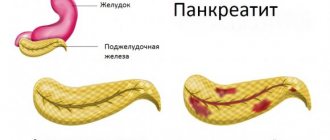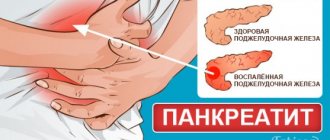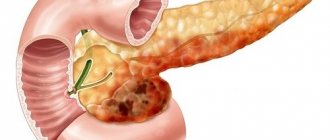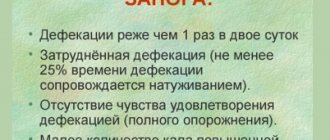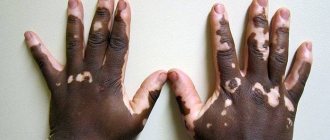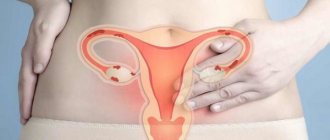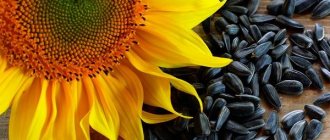Pancreatitis is acute or chronic inflammation of the pancreas. When the disease occurs, the organ of the digestive system undergoes an inflammatory change, and the gland tissue disintegrates.
Inflammation, as a rule, begins from the moment the gland ducts are completely blocked by stones, neoplasms or cysts. In such a situation, the outflow of digestive juice with the presence of enzymes into the duodenum is disrupted. Treatment of pancreatitis with folk remedies will help get rid of the disease.
Treatment of chronic pancreatitis during exacerbation
During the period of exacerbation, treatment of chronic pancreatitis pursues the following goals:
- Relief of pain syndrome.
- Decreased pressure in the pancreatic ducts.
- Correction of water and electrolyte disorders.
- Decreased secretory activity of the pancreas.
- Stimulation of intestinal motility.
Anesthesia
To reduce pain, the patient is advised to fast in the first days of an exacerbation. Then a gentle diet is prescribed (table No. 5). First of all, foods that increase the enzymatic activity of the gland are excluded from the diet. This is spicy, fried, salty, fatty food. It is better to eat 5 times a day, the emphasis is on protein foods (lean meats and fish, dairy products). To make food easier to digest, it is served in small portions, warm but not hot, in a liquid or semi-liquid state.
Important! Patients who follow all the principles of a gentle diet experience exacerbations 3 times less often, undergo surgical interventions less frequently, and recover faster.
If the pain syndrome is not relieved in the first days, non-steroidal anti-inflammatory drugs (paracetamol, diclofenac, etc.) and antihistamines (suprastin, diphenhydramine, pipolfen, etc.) are added to the treatment. This combination of drugs relieves inflammation and pain, reduces the toxic effect of inflammatory agents on the human body.
For persistent pain syndrome, narcotic analgesics (trimeperidine or octreotide) are added to treatment. As an alternative method of pain treatment, blockade of nerve trunks and plexuses is possible.
Decreased intraductal pressure
With timely treatment of hypertension, pain and inflammation go away faster, which means the acute phase of pancreatitis passes. Removing congestion in the pancreatic ducts is possible only by relaxing the sphincter of Oddi (it is located between the main duct and the cavity of the duodenum). Antispasmodics (no-spa, papaverine, baralgin, atropine, platiphylline, metacin) are used to treat and relieve spasms.
Correction of water and electrolyte disorders
It is used for the purpose of detoxification and replenishment of electrolyte and water losses in the body. For this purpose, colloidal and protein solutions for infusion are added to the treatment. If pancreatitis occurs with tissue breakdown, then forced diuresis in combination with infusion therapy may be used. In this case, the removal of inflammatory toxins from the patient’s body is accelerated.
Antisecretory therapy
The enzymes of the gland themselves are very toxic to itself. With pancreatitis, this toxic effect is enhanced. To neutralize, drugs are used that reduce secretory activity, which, in combination with hunger and diet, gives a noticeable effect. Drugs of choice: contrical, trasylol, gordox, sandostatin.
Increased peristalsis
Since pancreatitis inhibits the activity of the stomach and duodenum, digestion can be difficult. To enhance and stimulate peristalsis, metoclopramide, cerucal, and domperidone are added to treatment. These drugs not only enhance peristalsis, but also eliminate other dyspeptic disorders (heartburn, nausea, vomiting, etc.).
When can you completely get rid of acute pancreatitis?
This form of the disease can have varying degrees of severity in different people, so the possibility of the transition of acute pancreatitis to a chronic form serves as a criterion for doctors to predict the patient’s recovery.
If the disease is mild, then a small area of the pancreas is damaged. This disease can be cured almost completely. The patient should take the following actions:
- Change your lifestyle.
- Give up bad habits (alcohol, smoking).
- During illness, adhere to a strict diet.
- Take medications prescribed by your doctor.
- Use traditional medicine (decoctions, infusions) after consultation with your doctor to speed up recovery.
If the patient fulfills all these requirements, then he is completely cured of the disease. If these rules are not followed, there is no guarantee of cure, since the risk of the disease becoming chronic increases sharply. If the patient has a mild form of the disease, he should be examined by a doctor 2 times a year.
Important information: How to take No-Shpa for pancreatitis
In severe forms of acute pancreatitis, complications are possible that cause necrosis of pancreatic tissue, infection, development of a cyst, and the appearance of an abscess.
Such changes are most often irreversible. They lead to dysfunction of the organ. The disease quickly becomes chronic, so a complete cure for the disease is almost impossible with medication. To cure the patient, surgery must be used. This allows you to eliminate areas of the gland with necrosis, eliminate a cyst, and remove an abscess. But there are cases when the disease goes too far, so it is necessary to perform a resection of the entire pancreas.
Can pancreatitis be cured in these cases? The prognosis will be unfavorable, since after surgical intervention most often the disease becomes chronic, so the patient will need to follow doctors’ orders all his life to avoid exacerbation of the disease. In severe cases of the disease, the patient should be examined by a doctor 3-4 times a year.
Treatment of chronic pancreatitis in remission phase
Outside of exacerbation, treatment of chronic pancreatitis has the following goals:
- Extend the remission phase, thereby preventing another exacerbation.
- Slow down the progression of the disease.
- Prevent possible complications.
The main method of treatment is a gentle diet with a limit on fatty, fried, spicy and salty foods. Difficult to digest foods and dishes that enhance the enzymatic activity of the gland are excluded. The diet should consist primarily of protein foods (low-fat fish and meat, fermented milk products), cereals and vegetables. All food must be boiled or steamed and served warm, in a liquid or semi-liquid state. It is better to eat hourly, five times a day, in small portions.
For breakfast, they consume complex carbohydrates (cereal porridge with milk); meat products are allowed. Lunch must include soup and a main course. Dinner consists of light, low-calorie food (low-fat cottage cheese, vegetable stew). At night, to improve peristalsis and the functioning of the gastrointestinal tract, it is better to drink a glass of kefir or other fermented milk drink. General nutrition rules for chronic pancreatitis are as follows:
- Soups are prepared with vegetable broths or broths made from lean meat (chicken, turkey, veal, rabbit, lean beef).
- Vegetables are served as a side dish or as a stew, they are boiled or steamed.
- Fruits are served baked; preference is given to apples and pears.
- It is not recommended to consume whole milk, as it contains a fairly large amount of fat.
- Alcoholic and carbonated drinks are excluded. Teas, herbal decoctions, dried fruit compotes and jelly are allowed.
- It is better to eat bread dried, not fresh.
- For sweets, puddings and cottage cheese casseroles are allowed.
Important! To treat chronic pancreatitis during remission, just following a diet is enough. This completely relieves the patient of the symptoms of the disease, which means it prevents exacerbation. Medications during this phase are prescribed only according to indications and after consultation with a specialist.
Causes
Considering that pancreatitis is a difficult and dangerous disease, it would be logical to find out what leads to such changes in the body.
Both forms of the disease - acute and chronic - have common roots. The main difference comes down to the rate of development of pancreatitis. For example, in the acute form, all processes develop rapidly, but in the chronic form, the course of the disease is gradual and slow. At the moment, there are many factors that can lead to such a complex disease:
- toxic effects on the gland of various drugs;
- frequent overwork and stress;
— research methods that pose a danger to the gland (ERCP);
- binge eating;
- alcohol (one of the main reasons);
- biliary sludge and cholelithiasis;
— chronic starvation and protein deficiency;
- use of hormonal drugs during treatment of another disease;
- unhealthy diet (lots of spicy, salty, fatty foods).
With such an abundance of causes associated with other conditions of the body, it is not always clear why we treat the pancreas. The disease pancreatitis is actually a consequence of exposure to factors and diseases that initially affect other organs. That is why any health problems need to be given enough attention.
https://youtu.be/T7CsJXr7lgE
Surgical treatment of chronic pancreatitis
Surgical intervention for chronic pancreatitis is indicated in two situations:
- If conservative treatment is ineffective (unbearable pain, disease progression, total or subtotal pancreatic necrosis);
- If complications arise.
All surgical interventions can be divided into 2 types: radical and palliative.
In radical surgery, total (complete), subtotal (part) or lobar (lobular) removal of the pancreas is performed. In this case, anesthetized (dead, non-functioning) areas of the organ are removed. Most often, such intervention is carried out urgently, for health reasons. This prolongs the patient’s life, slows down the further development of the disease, and relieves the effects of intoxication in the body. However, after such an operation, the patient is required to undergo lifelong enzyme replacement therapy, and serious complications also occur quite often.
Palliative operations alleviate the patient’s condition and relieve the symptoms of chronic pancreatitis, but do not cure the disease itself. Here, the choice of operation depends on the specific situation and characteristics of each individual case. Various operations are used to drain the external and internal ducts of the pancreas and its cysts, blockades of the sympathetic trunk, celiac plexus and other large nerve formations are performed, cryotherapy, various endoscopic interventions and operations under ultrasound control are performed. All these interventions improve the general condition and alleviate the course of chronic pancreatitis.
Important! Surgery is a last resort measure taken by doctors to treat chronic pancreatitis. The pancreas performs a number of important functions, so the operation is performed strictly according to indications, most often urgently, in life-threatening situations. In order not to start the disease, it is important to follow all the doctor’s recommendations and follow a diet, then surgical intervention can be avoided.
Main symptoms of the disease
The first sign is pancreatic colic. Then severe pain appears in the stomach area, radiating to the back. Asymptomatic forms of the disease do not occur.
A characteristic symptom of pancreatitis is severe vomiting.
It occurs both in the early and late stages of the disease. At stages 2-3, there may be a rapid heartbeat associated with poisoning of the body. Fever is observed with the development of purulent complications.
In acute pancreatitis, there may be increased formation of gases with a delay in their elimination. In severe forms, signs of peritonitis are observed. After a week, a painful formation may appear in the epigastric region. A blood test reflects its thickening, which occurs due to an increase in hemoglobin and the number of red blood cells. With the development of the inflammatory process, leukocytosis is observed. Changes in the composition of urine can be found only in severe forms.
An increase in enzyme activity is detected by a biochemical blood test. Most often, attention is paid to the activity of amylase. The severity of the disease is determined by the duration of increased enzyme activity. With this disease, there may be a slight increase in blood sugar that is not associated with diabetes. An increase in the amount of urea is observed with toxic kidney damage and usually accompanies severe forms of pancreatitis.
The final diagnosis is made based on the results of tests and examinations: ultrasound diagnostics of the pancreas, endoscopy of the intestines and stomach, puncture of the abdominal wall if peritonitis is suspected, diagnostic laparoscopy of the abdominal cavity, X-ray examination of the stomach and gallbladder and computed tomography.
Phytotherapy
Herbal infusions help eliminate pain and make it possible to effectively cope with seasonal exacerbations or chronic pancreatitis. Herbal drink recipes are easy to prepare and do not require special skills. Treatment of the pancreas with herbs is quite effective.
Mint decoction
Mint leaves are collected from the bush, washed and dried. Dried leaves should be ground to a powder consistency. Pour in a few tbsp. l. the resulting composition 1.5 liters of boiling water. Infuse the healing drink for about 90 minutes. We use the decoction every 4-5 hours, 250 ml. Mint drink helps restore the gastrointestinal tract after an inflammatory process in the digestive system and effectively eliminates pain.
Chamomile decoction
Chamomile inflorescences perfectly relieve inflammation. For the treatment of pancreatitis, decoctions should be prepared, based on the dried flowers of the plant. Two tbsp. l. chamomile is poured with 500 ml of boiling water. The composition is infused for 90 minutes. It is best to use a decoction of chamomile in the morning and evening hours, 250 ml at a time. The course of treatment is 30 days. For preventive purposes, you can brew chamomile tea and drink it with added honey.
Alcohol infusion of kryphea
Cryphaea is a species of moss that grows in subtropical climates. To prepare krifea you should:
- Pour 1 tbsp. l. dried moss 120 ml of medical alcohol.
- Infuse the healing composition for 7 days in a place where the sun's rays do not reach.
- It is recommended to take Kryphea several times a day, 20 drops per 250 ml of water before meals.
- The course of treatment is 30 days. After a 60-day break, the course is repeated.
Dandelion decoction
The root of the plant helps relieve inflammation of the digestive system. The decoction should be prepared only from fresh roots, since the dried plant ceases to have a number of healing properties.
- Thoroughly wash and chop the root system of dandelions.
- Two tbsp. l. Add 600 ml of boiling water to the roots and cook over low heat for about 20–30 minutes.
- After cooling the broth, take 150 ml of it before each meal.
- The decoction should be drunk for 14 days.
Herbal decoctions and infusions are indispensable in the treatment of inflammation of the digestive system.
Medicinal collection
This kind of collection can be purchased at any herbal pharmacy or collected herbs with your own hands. You will need to prepare 50 g:
Treatment of the pancreas with herbs
- knotweed stems;
- celandine stems;
- corn silk;
- anise thigh berries;
- dandelion roots;
- pansies.
The herbs are thoroughly washed under running water and dried. After this, the dead wood is mixed and crushed to a powder state. The dried composition (50 g) is poured into 400 ml of boiling water and simmered over low heat for about 5 minutes. The decoction should be drunk 30 minutes before each meal, 150 ml at a time. The course of treatment is 14 days.
How to beat pancreatitis
You need to know what the expression “get rid of pancreatitis” means. For many people, cure is the “good” to return to their usual way of life. If you need a specific answer to the question - is it possible to defeat chronic pancreatitis, then you can answer that you cannot get rid of the disease. Each inflammation provokes cell death, which leaves scars.
Regular use of herbal infusions will improve the body’s condition and speed up treatment
To achieve the absence of relapses and good health, you need to follow some recommendations:
- give up alcoholic drinks;
- quit smoking;
- stop eating fatty foods;
- eat food often, but in small quantities;
- drink herbal infusions (based on dill, immortelle, chamomile).
It is worth knowing that you cannot return to your old lifestyle, even if you feel much better.
First aid for exacerbations at home
Not only the patient himself, but also his relatives should know the rules for providing first aid during an attack of pancreatitis. If the pain syndrome is severe, you should not self-medicate. The patient needs urgent medical attention.
During exacerbations of chronic pancreatitis, the pain is less intense and patients can cope with attacks on their own.
Algorithm of actions during an attack:
- calling an ambulance;
- avoiding the consumption of food and water during an attack;
- A cold compress will help reduce the intensity of pain;
- it is allowed to take a drug from the category of antispasmodics;
- providing the patient with complete rest and bed rest;
- the pain manifests itself less intensely if you sit down with your torso tilted forward or lie down in the “embryo” position;
- You should not lie on your back during an attack (the pain intensifies, vomit may enter the respiratory tract).
Examinations and immediate measures for pancreatitis
The development of modern medicine has made the treatment of this disease quick and effective. Modern drugs make it possible to abandon surgical intervention and move on to step-by-step therapy. Before starting treatment, an examination, general tests, and ultrasound examination are prescribed.
A quick positive effect is achieved by suppressing the breakdown of enzymes and removing toxins from the blood that inhibit the patient’s recovery.
What does the pancreas do?
It has two main functions:
regulates sugar levels due to the release of insulin;
participates in the food processing system in the duodenum.
Pancreatitis involves a failure of the digestive system due to disruption of the pancreas, resulting in an excessive accumulation of enzymes in the duct. In this situation, the iron secretes juice, which destroys tissue and impairs its functionality. The connective tissue begins to replenish the damaged cells, but this process only recreates the volume, but does not restore the ability to produce hormones. New cells cannot perform the functions of their dead predecessors. And as a result, digestion loads the remaining cells, causing acute inflammation of the pancreas.


